This Content Is Only For Paid Subscribers
In Part One, guest anthropologist, Melissa Fisher shares how anthropologists analyze the impact of various disruptors on the workplace, such as the pandemic, social movements, and new technologies, focusing on the transformation of social structures and cultural dimensions in the evolving world of work.
She explores the tension between leaders advocating for a traditional in-office approach and those embracing hybrid flexibility, emphasizing the need for a nuanced understanding of diverse stakeholders and the evolving cultural values and ideals shaping the concept of work and the workplace. The discussion underscores the challenges and opportunities for leadership in navigating the complex landscape of the future of work.
Transcript
The office ends up being a place not just for work, but how you think about your life in essence, especially now that we have this dissolving boundaries between work and life.
The Symbols & Rituals (1:08)
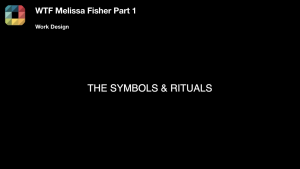 One of the things that anthropologists do is look at how different phenomenon or disruptors are impacting the workplace. We have a whole set of disruptors from the pandemic to new social movements like Black Lives Matter and Me Too, to new technologies, right? Everybody’s excited about AI or cautious about AI, and we are really interested in how all these disruptions are disrupting the world of work, how we work, how we organize work, how we think about work, and the meaning of work. The key signatures of cultural anthropology are twofold. One is to understand how social structures of work are transforming as we move into a hybrid office format for many people. How do we maintain ties with one another that we’re presumably mostly in the physical office? And then we’re really interested in the cultural dimension, what we think about workplace culture. In other words, what are the symbols, values, rituals, ideals that are part of a workplace that are shaping how people think about the office, the meaning of the office.
One of the things that anthropologists do is look at how different phenomenon or disruptors are impacting the workplace. We have a whole set of disruptors from the pandemic to new social movements like Black Lives Matter and Me Too, to new technologies, right? Everybody’s excited about AI or cautious about AI, and we are really interested in how all these disruptions are disrupting the world of work, how we work, how we organize work, how we think about work, and the meaning of work. The key signatures of cultural anthropology are twofold. One is to understand how social structures of work are transforming as we move into a hybrid office format for many people. How do we maintain ties with one another that we’re presumably mostly in the physical office? And then we’re really interested in the cultural dimension, what we think about workplace culture. In other words, what are the symbols, values, rituals, ideals that are part of a workplace that are shaping how people think about the office, the meaning of the office.
Why would you go to the office? Who would you see? But not just the office unto its entity, it’s about your career. What do you think is the meaning of your career? What do you aspire to? Because the office ends up being a place, not just for work, but how you think about your life in essence, especially now that we have this dissolving boundaries between work and life. People in the wake of the pandemic have sort of rethought, ‘Do they want to work as hard? Do they want to work in the workplace?’ Anthropologists try to discern what are the underlying cultural values, ideas, symbols, both in American culture or global culture and workplace culture that are being transformed and tugged at and how people are embodying these kinds of culture in their everyday work practices.
Tug of War (3:15)
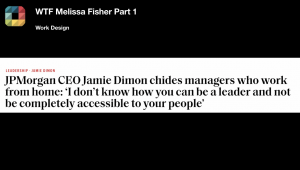 There’s sort of a tug of war between Jamie Dimon, for example, who just in April wrote a memo to his senior staff, particularly the senior bankers who are in the office, ‘It’s really important that you’re in the office, that people have access to you for information, for feedback, to do business, and therefore you need to be in the office five days a week to conduct the business of finance, to make deals.’ And then his counterpart at Citibank Jane Frazier has taken a more measured approach, thinking about having a more flexible arrangement for her workers in a more hybrid awareness. She was at Davos, also sort of not pulled back, but she started to think about when do people need to be in the office? So whether you are in one firm or the other, yes, of course it matters, but more about sort of how are people reassessing the meaning of hybrid work and when people should be in the office, depending on industry from, and of course it depends on the area of the firm and the particular profession that you’re involved in.
There’s sort of a tug of war between Jamie Dimon, for example, who just in April wrote a memo to his senior staff, particularly the senior bankers who are in the office, ‘It’s really important that you’re in the office, that people have access to you for information, for feedback, to do business, and therefore you need to be in the office five days a week to conduct the business of finance, to make deals.’ And then his counterpart at Citibank Jane Frazier has taken a more measured approach, thinking about having a more flexible arrangement for her workers in a more hybrid awareness. She was at Davos, also sort of not pulled back, but she started to think about when do people need to be in the office? So whether you are in one firm or the other, yes, of course it matters, but more about sort of how are people reassessing the meaning of hybrid work and when people should be in the office, depending on industry from, and of course it depends on the area of the firm and the particular profession that you’re involved in.
Think About the Stakeholders (4:25)
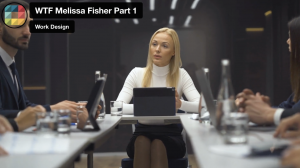 Although we are moving towards a more flexible hybrid kind of structure, the fact of the matter is that bureaucracies have historically been hierarchical and that authority has been top down. Now that is transforming, and I don’t want to take away from that, but I think that those people who have the wheel of the ship are the ones that are trying to make the decisions. And yet you have a series of different employees at different levels, either adhering or not adhering to leadership decisions. As an anthropologist that works with people in trying to assess and create a very sort of inspiring office and work environment, wherever it is, I think it’s really important to think about the different stakeholders from the top to the bottom of the corporate hierarchy. In an era in which workers increasingly want to have voice and agency and choice, those organizations that are working well and moving forward to some degree are allowing employees to have some kind of say.
Although we are moving towards a more flexible hybrid kind of structure, the fact of the matter is that bureaucracies have historically been hierarchical and that authority has been top down. Now that is transforming, and I don’t want to take away from that, but I think that those people who have the wheel of the ship are the ones that are trying to make the decisions. And yet you have a series of different employees at different levels, either adhering or not adhering to leadership decisions. As an anthropologist that works with people in trying to assess and create a very sort of inspiring office and work environment, wherever it is, I think it’s really important to think about the different stakeholders from the top to the bottom of the corporate hierarchy. In an era in which workers increasingly want to have voice and agency and choice, those organizations that are working well and moving forward to some degree are allowing employees to have some kind of say.
What Has Changed? (5:42)
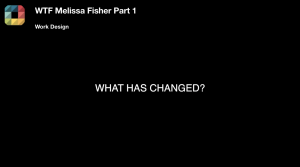 There is a hardwired cultural set of ideals and of values about what is the workplace and where work should be done. Perhaps with some leaders, not all, there may be a tendency to be wedded to these more classical ideas, cultural models of work and that the more kind of emerging ideas of hybrid work, more flexible work, going to the office one day, going to a workspace, a coffee shop, they’re kind of tugging at each other. My guess is that different firms, different industries will come up with what works best for them but there is inherently a conflict. Anthropologists often look at the world, and it’s not that something completely changes. Culture’s hard to change, and that’s why it’s hard to change what’s going on, whatever the firm is. What we see is a lot of things get reproduced, the ways of working don’t change and there’s really transformation and reproduction or lack of change. There has been a tendency in the broader discourse to be like, everything was disrupted.
There is a hardwired cultural set of ideals and of values about what is the workplace and where work should be done. Perhaps with some leaders, not all, there may be a tendency to be wedded to these more classical ideas, cultural models of work and that the more kind of emerging ideas of hybrid work, more flexible work, going to the office one day, going to a workspace, a coffee shop, they’re kind of tugging at each other. My guess is that different firms, different industries will come up with what works best for them but there is inherently a conflict. Anthropologists often look at the world, and it’s not that something completely changes. Culture’s hard to change, and that’s why it’s hard to change what’s going on, whatever the firm is. What we see is a lot of things get reproduced, the ways of working don’t change and there’s really transformation and reproduction or lack of change. There has been a tendency in the broader discourse to be like, everything was disrupted.
We have to unlearn everything that we did, and this is what is happening and that’s not what’s happening. The reason you see these kinds of disputes or debates being played out in the media or the kinds of conversations that you and I are having is because we are at a moment in which not everything changed, not all the demands of business, not all the demands of office, but some things did. It’s sort of up for grabs on the one hand, but we’re being pulled in many different directions. I think that’s why it’s very difficult for leaders to figure out what’s happening. It’s also difficult for them to know literally who is coming into the office when and why. We don’t really know the conflicts and the issues behind those decisions. For me, as an anthropologist who mostly uses qualitative data, it’s important.
As we think about the future of work to use both quantitative and qualitative data, the sensors are a perfectly good example of having a real sense of the numbers: Who’s coming in, when is there high density? But understanding why there is high density, what’s happening in those very dense moments is in fact, innovation, collaboration, transpiring. We don’t know as much increasingly we’re going to have with AI and with people analytics. We really need increasingly evidence-based data to really tell us what is happening and to help us anticipate what’s going to happen in the future. What leadership is dealing with right now is trying to figure out where we’ve come from, where we are now, but to assess in a moment of great uncertainty what is going to happen. We’re in a moment of experimentation when it’s not entirely clear what the answers are.
Where are the Boundaries? (8:42)
Nobody can just take the existing rulebook and update it.
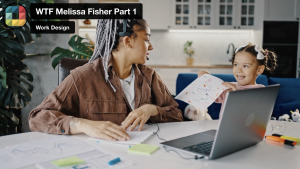
You just can’t take the existing words or documents and just say, well, I’ll just tweak it here or there. You have to really rethink how those policies are going to be embedded in these new hybrid work environments. So to what extent does the firm have a position or able to infiltrate the private or domestic sphere if a person is working at home? And that’s a whole question about where is the workplace? Where is leadership? How much can leadership enter into workers’ lives? Not just in the physical presence of the office, but in what has historically been the domestic space of family life. And again, these are fairly privileged people. I do want to point out that those of us who are able to work at home are completely different than nurses on the front line or a whole set of other workers and that’s really important.
Questioning the Office (9:47)
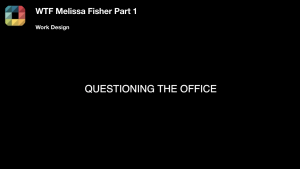 There are lots of moments in which you have different phenomenon restructuring the office, and maybe not everyone is rethinking about the purpose of the office, but certainly architects, builders, city planners are, and they’re not always in agreement. It’s worthwhile to think about it is probably true that most of us who work in office don’t stop to say, ‘oh, what am I doing?’ Because it’s sort of part and parcel or before the pandemic that was sort of your given life. But I think that there have always been people that are debating what is an office? What is the space of an office? How will people communicate in the office? The rules of the office have somewhat been up for grabs. The idea of questioning what is an office and what is work, I think on a global scale and certainly on a national scale has never happened as deeply as it had.
There are lots of moments in which you have different phenomenon restructuring the office, and maybe not everyone is rethinking about the purpose of the office, but certainly architects, builders, city planners are, and they’re not always in agreement. It’s worthwhile to think about it is probably true that most of us who work in office don’t stop to say, ‘oh, what am I doing?’ Because it’s sort of part and parcel or before the pandemic that was sort of your given life. But I think that there have always been people that are debating what is an office? What is the space of an office? How will people communicate in the office? The rules of the office have somewhat been up for grabs. The idea of questioning what is an office and what is work, I think on a global scale and certainly on a national scale has never happened as deeply as it had.
On the one hand, people have on a global scale, and certainly in the US we thought the meaning in the purpose of the office but I do think that there have been moments in different periods of history and certain kinds of experts and professionals that have also been rethinking the meaning of the office. It’s just that it’s collective conversation now and that’s the amazing and fascinating thing. It’s so interesting.
The Context (11:08)
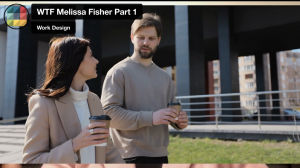 This is a place for socialization, for collaboration, for innovation, that you have a purpose for taking that commute or deciding to get dressed in the suit or whatever; that will bring you into the office. Architects, interior designers, how are they really redesigning the spaces to bring about the best in people? Just the opportunity to move, do quiet work, you want an office to be all of those things. You don’t want to segment. I think the conversation has tended to get segmented into, ‘I’m going to do my quiet, concentrated work at home, and then I’m going to come in and collaborate’ and we’re not so linear. We’re very iterative in a lot. It depends on obviously the job, but your body and your brain isn’t totally wired to just be like ‘I’m just going to collaborate’. Now if you’re thinking about something, you might take a walk and have a coffee with the co-worker who says something interesting. The creative process is really interesting. There are all kinds of things that are happening in the context of an office and how we draw people in is really important in how they feel.
This is a place for socialization, for collaboration, for innovation, that you have a purpose for taking that commute or deciding to get dressed in the suit or whatever; that will bring you into the office. Architects, interior designers, how are they really redesigning the spaces to bring about the best in people? Just the opportunity to move, do quiet work, you want an office to be all of those things. You don’t want to segment. I think the conversation has tended to get segmented into, ‘I’m going to do my quiet, concentrated work at home, and then I’m going to come in and collaborate’ and we’re not so linear. We’re very iterative in a lot. It depends on obviously the job, but your body and your brain isn’t totally wired to just be like ‘I’m just going to collaborate’. Now if you’re thinking about something, you might take a walk and have a coffee with the co-worker who says something interesting. The creative process is really interesting. There are all kinds of things that are happening in the context of an office and how we draw people in is really important in how they feel.
Who’s In Charge? (12:23)
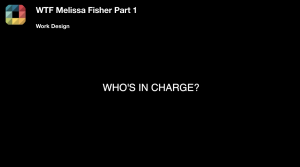 I do think that we’re at a tipping point, but we’re certainly not there yet. We often talk about in the debates about the future of the office and workers is to think about who is in charge of human capital. Historically, who has been in charge of people in the office? It’s been human resource professionals and they still are but in the wake of the pandemic, you have a lot more professionals from different areas invested in thinking about the relationship between people and place. There’s been a kind of convergence in the behind-the-scenes operations about who will have a say in work and the ways that people work. Historically, IT, HR, FM have been pretty siloed. Now in some capacity, they’re starting to work together to figure out what is the workplace, the relationship between people and place and maintenance. There is all these kinds of front and back office support structures that are changing.
I do think that we’re at a tipping point, but we’re certainly not there yet. We often talk about in the debates about the future of the office and workers is to think about who is in charge of human capital. Historically, who has been in charge of people in the office? It’s been human resource professionals and they still are but in the wake of the pandemic, you have a lot more professionals from different areas invested in thinking about the relationship between people and place. There’s been a kind of convergence in the behind-the-scenes operations about who will have a say in work and the ways that people work. Historically, IT, HR, FM have been pretty siloed. Now in some capacity, they’re starting to work together to figure out what is the workplace, the relationship between people and place and maintenance. There is all these kinds of front and back office support structures that are changing.
People have a set of ideas of what they do. They have a set of skills, a set of expectations, who’s in charge of what and these things are sort of in the process. It’s almost like they’re embryonic. In a study I’ve done over a year where I’ve gone to interview people over a series of moments in their lives really shows you how transformative a year can be, especially as they move from remote to hybrid work. We really need to understand, can we discern some kinds of patterns to really figure out what’s happening?
Hybrid Leadership (14:03)
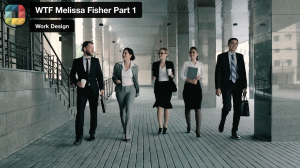 We should have different models of leading. There’s a whole bunch of work being done on collective leadership, how we can lead as a collective network leadership. There are different ways and shared leadership models. There are different ways to experiment, and we may have an opportunity in this more hybrid, flexible, agile environment to engage in different strategies, different leadership practices that will actually promote and diffuse.
We should have different models of leading. There’s a whole bunch of work being done on collective leadership, how we can lead as a collective network leadership. There are different ways and shared leadership models. There are different ways to experiment, and we may have an opportunity in this more hybrid, flexible, agile environment to engage in different strategies, different leadership practices that will actually promote and diffuse.
Because one of the questions is how do you have the organizational culture and values spread in a digital hybrid environment? That’s the concern. We really need to think about different leadership models. Of course, it’s also important to bring people together so that they have a sense of who they are, where they are. I’ve talked about sort of the offices being a space of ritual, of coming together, a feeling together, of feeling bonded. It’s really important because you need to have, if you want to have a sense of I am part of that community, I see that leader as somebody that I look up to or feel that they’re somebody that I agree with; I feel a part of this community of this company. Organization’s leaders need to have their employees feel at least that they have some capacity of understanding who are their workers.
Of course, all of this goes hand in hand with ensuring that work gets done, deals get done, profits are made and so it’s a balance. A leader has a lot of different stresses. In one way I’m pushing the collective and the different forms of leadership. On the other hand, it can’t all be ‘kumbaya’ either. You have to really be savvy and figure out how to negotiate a conversation. It’s about negotiating, it’s about translating, and then bringing people together. Nobody’s going to be perfectly happy under any leadership.
3 Takeaways:
Cultural anthropology can offer valuable insights into designing more human centric, inclusive, healthy, and sustainable work environments that support the evolving workplace of today. Three dimensions of the profession can be drawn upon to inform workplace strategy and design:
- Ethnographic Methods:
Anthropology, based on ethnographic fieldwork, enables workplace leaders and designers to gain insight into workplace culture and to create a unified sense of it across material and digital locations where work happens. Engaging in ethnography entails listening to employees and short-term participant-observation of how they navigate workspaces.
Most methods applied in workplace research adopt quantitative and non-immersive qualitative techniques drawing primarily on surveys, focus groups, and interviews. The problem is not that these other methods are wrong. Rather they are incomplete without a deep understanding of workplace culture and the socio-economic context in which work, and the workplace is changing, which anthropological tools and approaches can provide. - Workplace Culture: Symbols and Rituals
Anthropologists are experts in understanding workplace culture. They use qualitative findings to discern the underling cultural patterns of symbols, meanings and ritual in the workplace that shape employee’s identities and their workplace experience. Analysis of qualitative data, in conjunction with hard data about workers preferences and habits, can determine how to build and maintain meaningful workplace cultures and experiences. - Broader Socio-Cultural Context
Anthropology can not only help us understand workplace culture. It can also provide deep insight into the broader socio-cultural context in which employees make decisions about going into the office. These include their feeling isolated at home and in need of a physical workplace to not only provide socialization, but a source of professional identity and legitimacy. As workplace leaders collaborate with anthropologists to rethink workplace environments for the needs of today, they can apply anthropological frameworks and approaches to answer questions such as what employees want to come back to work in the office environment for, and how workplace design can foster employees’ sense of belonging.
Resources:
- Melissa Fisher – CFAR
- An Anthropological Approach to Today’s Workplace Design (workdesign.com)
- Global Foresight (swedishcollegium.se)
- Duke University Press – Wall Street Women (dukeupress.edu)
- Duke University Press – Frontiers of Capital (dukeupress.edu)
Meet Melissa Fisher:
 Melissa is a Senior Advisor at CFAR Consulting and Coaching Services. A cultural anthropologist, she has extensive experience studying and consulting on organizations, workplace culture, technology, and the built environment. She takes a human-centric and inclusive approach to designing workspaces and culture, using ethnographic skills to understand and optimize how people navigate working in physical and digital environments.
Melissa is a Senior Advisor at CFAR Consulting and Coaching Services. A cultural anthropologist, she has extensive experience studying and consulting on organizations, workplace culture, technology, and the built environment. She takes a human-centric and inclusive approach to designing workspaces and culture, using ethnographic skills to understand and optimize how people navigate working in physical and digital environments.
Melissa has actively bridged business and academia throughout her career. She has published two books, Frontiers of Capital: Ethnographic Reflections on the New Economy (2006) and Wall Street Women (2012); and played an advisory role on Equity, a 2016 Sony Pictures Classic female financial thriller film. She is working on a book called “Anthropology, Ethnography, and the Global Reimagining of Work,” which explores how workplace experts shape future work environments in the context of pandemics, with a focus on equity and justice. Her work has been featured in publications such as The Washington Post, The Wall Street Journal, CNBC, NPR, and the BBC. She has also delivered hundreds of keynote speeches and talks worldwide.
Melissa is also affiliated with New York University’s Institute for Public Knowledge, New York University’s School of Professional Studies, the Global Foresight Project based out the Swedish Collegium for Advanced Studies, and the Conference Board. She holds a B.A from Barnard College, and a Ph.D. in Anthropology from Columbia University.
Episode 5 Part 1 Credits:
- Created By Bob Fox
- Produced By Work Design Magazine
- Directed By Bob Fox
- Edited By Katie Sargent & Bob Fox
- Special Thanks to Amanda Gram

